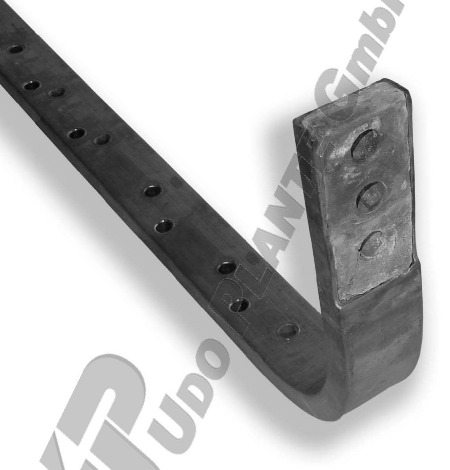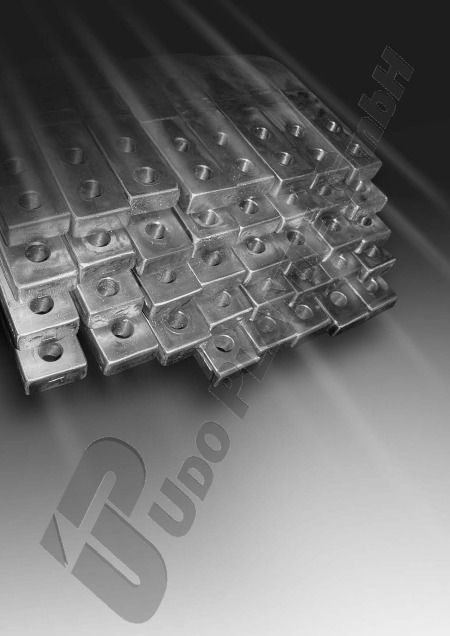More corrosion - less conductivity
The correct connection of titanium-clad copper bars to the power supply is a constantly recurring issue. It is widely believed that the poor conductivity titanium should be removed from the contact surfaces – usually by milling or turning:
On the face of it this approach seems logical. The conductivity of copper is 58 m/ Ohm x mm² while that of titanium amounts to as little as 2,2 m/ Ohm x mm². This means that a copper wire of 1 mm
has a resistance of 1 Ohm. With titanium the same resistance is already reached at a length of 2.2 m.
However, reality looks a little different. For example, environmental influences have to be taken into consideration. When cleaned of titanium the copper contact surfaces corrode as a result of their exposure to aggressive acids, vapors and condensates in the galvanic treatment.
The copper at the contact surfaces is eaten away by corrosion. The resulting point contacts at the contact surfaces cause the electrical conductivity to deteriorate.

These hockey sticks are so corroded after a short service life that they can no longer be used in this condition. So far people tried to remedy the situation by applying copper solder and subsequently surface milling the contact surfaces to render them usable again. Yet, after a short time of use these
repaired hockey sticks are corroded again and depending on their condition are either repaired again or scrapped.
As a solution to this problem we offer the TiCu Clad®UP process.
High quality corrosion protection
The sophisticated and expensive titanium cladding is no longer removed today but rather used as high quality corrosion protection.
Even extremely corroded power connections can today be repaired inexpensively and lastingly with the Well-known users worldwide are already benefiting from this possibility. We will gladly quote references on request.UP process.
Voltage drop and resistance
When the voltage drop is calculated only the cladding thickness of the titanium (0.5 – 2.0 mm) is entered into the equation asthe value for length. The result is a very low electrical resistance and hence a very low voltage drop. With a cladding thickness of 0.5 mm the voltage drop is often only in the mV range.
The costs incurred by the voltage drop are significantly lower than those caused by the corrosion damage on the exposed connections of the current-carrying TiCu Clad® anodes.
In service for too long – now the conventional hockey sticks are beyond repair.

The solution
The sensible and economically viable solution isoffered to you by Udo Plante GmbH in the form of
the TiCu Clad directly as high quality TiCu Clad® UP process – either as a repair or directly as high quality TiCu Clad® hockey sticks.


